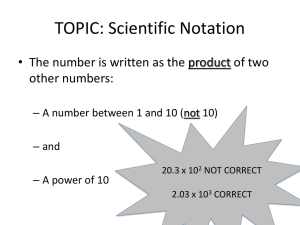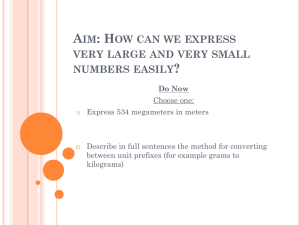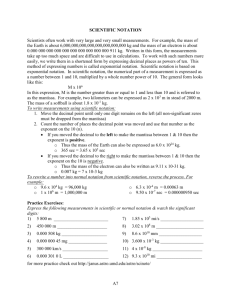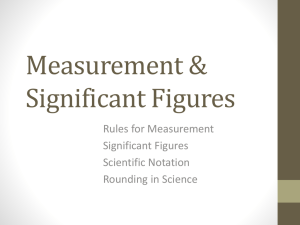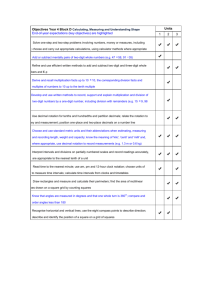Scientific Notation Notes Handout
advertisement
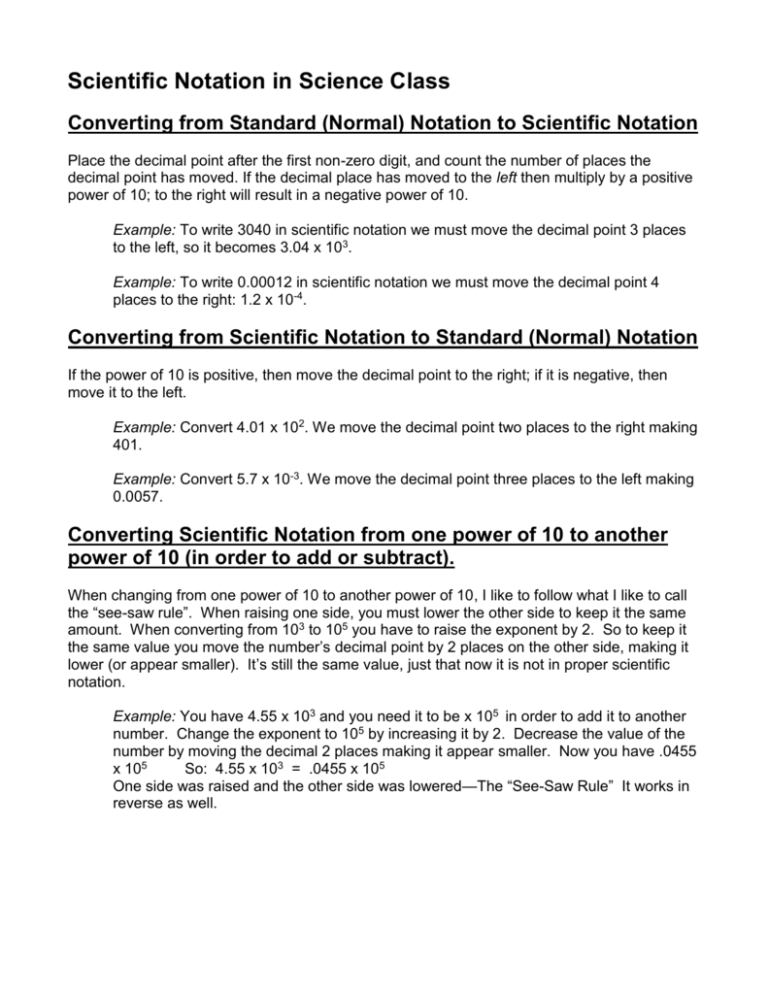
Scientific Notation in Science Class Converting from Standard (Normal) Notation to Scientific Notation Place the decimal point after the first non-zero digit, and count the number of places the decimal point has moved. If the decimal place has moved to the left then multiply by a positive power of 10; to the right will result in a negative power of 10. Example: To write 3040 in scientific notation we must move the decimal point 3 places to the left, so it becomes 3.04 x 103. Example: To write 0.00012 in scientific notation we must move the decimal point 4 places to the right: 1.2 x 10-4. Converting from Scientific Notation to Standard (Normal) Notation If the power of 10 is positive, then move the decimal point to the right; if it is negative, then move it to the left. Example: Convert 4.01 x 102. We move the decimal point two places to the right making 401. Example: Convert 5.7 x 10-3. We move the decimal point three places to the left making 0.0057. Converting Scientific Notation from one power of 10 to another power of 10 (in order to add or subtract). When changing from one power of 10 to another power of 10, I like to follow what I like to call the “see-saw rule”. When raising one side, you must lower the other side to keep it the same amount. When converting from 103 to 105 you have to raise the exponent by 2. So to keep it the same value you move the number’s decimal point by 2 places on the other side, making it lower (or appear smaller). It’s still the same value, just that now it is not in proper scientific notation. Example: You have 4.55 x 103 and you need it to be x 105 in order to add it to another number. Change the exponent to 105 by increasing it by 2. Decrease the value of the number by moving the decimal 2 places making it appear smaller. Now you have .0455 x 105 So: 4.55 x 103 = .0455 x 105 One side was raised and the other side was lowered—The “See-Saw Rule” It works in reverse as well. Working with Scientific Notation: Addition, Multiplication, ... Addition and Subtraction When you are adding or subtracting numbers in scientific notation, their powers of 10 must be equal. If the powers are not equal, then you must first convert the numbers so that they all have the same power of 10. (See Converting Scientific Notation from One Power to Another above.) Example: (6.7 x 109) + (4.2 x 109) = (6.7 + 4.2) x 109 = 10.9 x 109 = 1.09 x 1010. (Note that the last step is necessary in order to put the answer in scientific notation.) Example: (4 x 108) - (3 x 106) = (4 x 108) - (0.03 x 108) = (4 - 0.03) x 108 = 3.97 x 108. Multiplication and Division It is very easy to multiply or divide. Do the operation first (multiply or divide the first numbers), then add the powers of 10 if you multiplied or subtract the powers of 10 if you divided. Example: (6 x 102) x (4 x 10-5) = (6 x 4) x (102 x 10-5) = 24 x 10(2+ -5) = 24 x 10-3 = 2.4 x 10-2. (Note that the last step is necessary in order to put the answer in proper scientific notation.)

